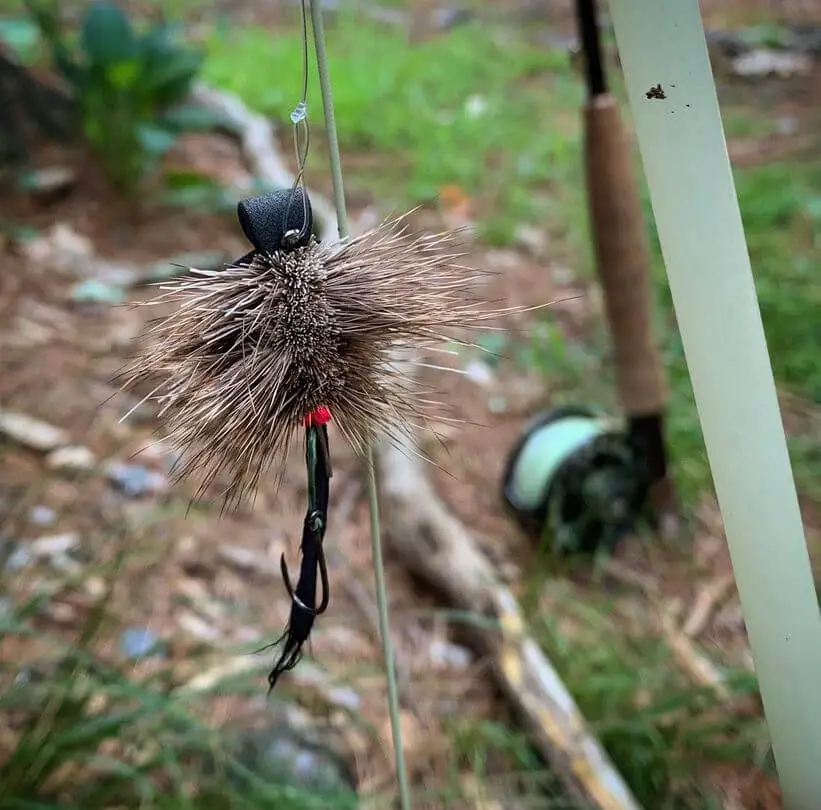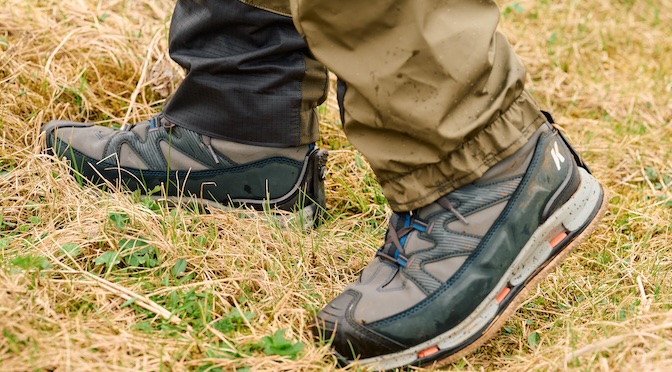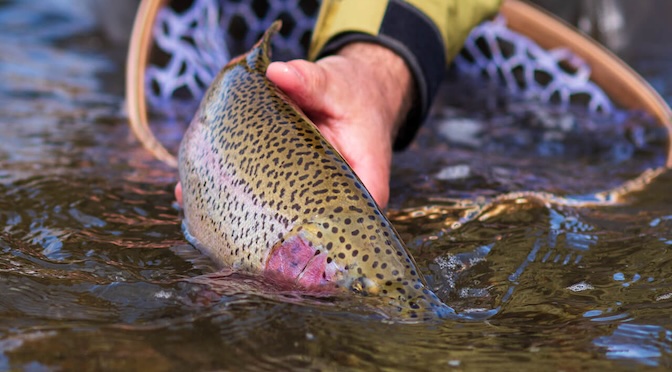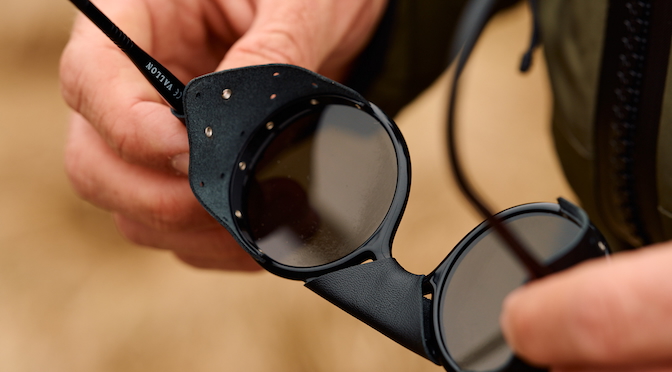Last updated on September 30th, 2022.
There’s a delicacy to fly fishing. The act of tying a microgram of feather and fur around a hook you can barely see to perfectly match a fragile mayfly requires a deft and gentle hand.
The cast (which the uninformed call art … it’s not) in the hands of a master possesses a curve that would make Fibonacci jealous. The perfect drift across a slow run where the slightest imperceptible drag will result in a refusal demands a subtle touch. Christ, even the weather thinks so otherwise it wouldn’t roll in a translucent fog as a river wakes up and you stand on the bank marveling at the splendor of it all.
So why was I waist deep in the dark slapping hunks of fur and foam onto water that I couldn’t see and recklessly yanking them in only to hurl them back out?
Mousing.
Like nearly everything good in life, I came late to feeding mice to trout. Probably because a lot of the above “purist” reasons and a few of my own shortcomings. My eyes aren’t great in the dark—twilight is the worst—and I don’t like the idea of casting blindly. I can barely thread tippet through a hook eye in the day without some heavy magnification which is compounded at night. And after almost drowning twice, I’m a cautious wading angler. It’s hard to estimate just how deep the water really is at night. What I didn’t realize is that mousing is the bait casting of fly fishing—disregard everything you know about fly presentation and just wing it out there and make some noise.
“They’re just looking for a fast, cheap meal
and would probably take a bird just as easily.”
The idea that trout actively look for mice is flawed. They’re just looking for a fast, cheap meal and would probably take a bird just as easily. But throwing a duckling pattern just seems skeevy. We use mice because it’s cool to say “mousing.”
We were camping on the Farmington River in Connecticut to fish dries in the day and mice at night. The sun had been down for a few hours when Devin stood up and said, “Let’s go.” The four of us grabbed our rod and followed him down the black trail alongside the river, heading to the tail-out of a large pool that he had scouted earlier. A spot that I normally wouldn’t fish in the day as it would require a perfect drift and the fish can see you from a mile off.
When I was a kid, I would often play a game where I pretended to be blind and had to navigate my way through the house by touch. After smashing my face into a half dozen walls, I could just open my eyes and the game went away. That’s not an option at midnight on a river. We lined up on the bank and slowly stepped in. Fortunately, the bottom of the soft water was forgiving, and I shuffled out as far as I felt safe. Turning my light on momentarily, I seemed to have enough space for a decent back cast.
I was about to roll cast to get some line out, when Devin called out from my right. “Fish on.” That seems fair as this was his hole. A moment later, Mike and Brandon on the left both “holy shitted” their confirmation that they had hooked up. As near as I could tell, the fish were stacked up waiting for us—maybe we hit a “hatch” at just the right time. Stacked up for those guys anyway, as everyone but me caught fish in the first 15 minutes. They were working together netting for each other and giggling like schoolboys as they shouted out the size of each trout. Brandon let out a whoop as he netted a 16” Brook trout, rare for this river.
“Slap the mouse down on the water.
Let it sit there stunned for a moment”
I was using a perfect and delicately tied mouse with realistic eyes and proportionate whiskers that a friend had given to me. Very pretty, but it didn’t seem to garner any interest, so I swapped it out for one a little more expressionistic – black foam and brown fur with a tail. No whiskers; no eyes. Delicacy wasn’t called for … brutalism was. If I was after German browns, I figured I needed more Egon Schiele and less Philipp Weber. I asked Brandon about his timing.
“Slap the mouse down on the water. Let it sit there stunned for a moment, then give a couple of short retrieves to move water followed by smaller mousey moves.”
I went over every mouse experience I’ve ever had to find some “mousey moves” and settled on a slow steady retrieve with a rod tip twitch. Three casts later, I was on with a respectable 15” brown. And then another.
We checkerboarded our way upstream as it seemed that the best shots were on virgin water. Despite the darkness once we realized that the fish didn’t care about how much noise we were making, speed was the order. It was my turn at the lead and my second cast landed in about 12” of water — I measured it the next day — when it was swallowed whole and my 6wt took on a hard bend. When I changed mice, I had quickly tied on a little extra 3x and now was praying that the knot held.
The trout was taking me deep and as I tried to guide him back to middle of the river, Mike came over to help me net the fish. As it passed him on a run, he let out a quiet, “Oh shit.”
“What?”
“We’re going to need a bigger net. Brandon!”
I steered it back toward him as Brandon waded over with his net in hand and together, we eased it into the net. “The opening on this net is 19” and this thing is sticking out on both ends. We need to measure.”
He pulled out a tape and laid it along the trout in the net. “Twenty-two, no wait … twenty-three inches.” The mouse was deep in the fish’s throat and it took a moment to back the hook out. Fortunately, the brown wasn’t affected at all and started fighting the net. Since I never take pics of fish, I lowered the net and let him slip out. He was like a python slithering into the water.
We broke for the camp shortly after that and Mike and I stayed up for a fire and whisky as we went over the night. It was his first time mousing as well, but he’s from Minnesota and has fished the Boundary Waters, so I asked if there was any truth to the rumour that they use live squirrels with hooks tied to them for muskies.
He looked at me over the rim of his glass. “We’re not insane. That’s a Wisconsin thing.”
The next day, Mike sent me a video of the release. I really didn’t have a sense of how big this trout was at the moment. He was the biggest brown trout I’ve caught in North America, bested only by a beast in Patagonia. I now keep a few mouse patterns in my fly box.
There’s a small pond at my Catskills camp. It is filled with various minnows and two very large bass. I have never caught those bass despite trying dries, nymphs, streamers, wooly buggers and San Juan worms. Neither have any of my angler friends caught those fish.
The weekend after the big brown, I grabbed my rod at dusk, tossed the mouse to the other side of my pond and slow retrieved it in a very mousey way. Halfway across, the larger of the bass ignored it. Then the smaller one did. I slipped the hook into the keeper and walked back to my cabin.
A squirrel came out of his tree to lecture me. I mentally fitted him for hooks.








